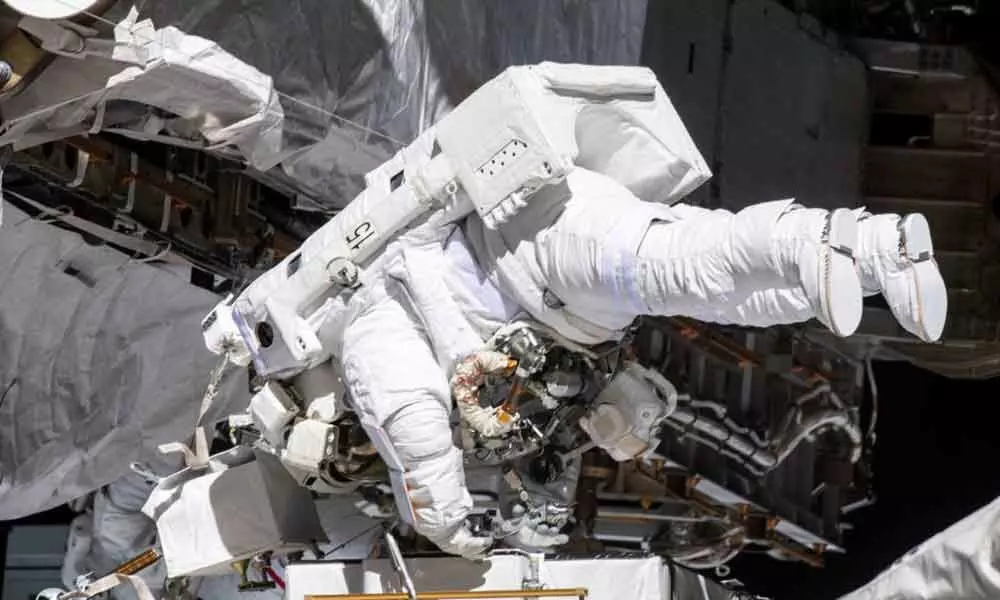Live
- QR-coded tag to trace missing kids yields good results
- Efforts on to strengthen coop sector: Atchanna
- Hyd’bad Book Fair organises book inspiration programmes
- Mega job mela on Dec 28
- Amit Shah’s removal from Union Cabinet demanded
- SCR to run weekly special trains
- TG to roll out Clean and Green Energy Policy soon: Bhatti
- Youth must take up farming, allied activities: Dhankhar
- Blankets, fruits distributed to mark Vajpayee’s birth anniv
- Hyderabad: Techie turns traffic volunteer, promotes road safety
Just In
NASA astronauts conduct a first all-women spacewalk


NASA astronauts Christina Koch and Jessica Meir ventured out of the International Space Station on Friday for the first all-women spacewalk to replace a failed power controller, also known as a battery charge-discharge unit (BCDU).
NASA astronauts Christina Koch and Jessica Meir ventured out of the International Space Station on Friday for the first all-women spacewalk to replace a failed power controller, also known as a battery charge-discharge unit (BCDU).
Koch and Meir ventured out into the vacuum of space at 7.38 a.m. EDT (5.08 p.m. India time) for the spacewalk, according to NASA.
It is the first time that all spacewalkers are women and the 43rd spacewalk to include women.
This is Koch's fourth spacewalk and Meir's first.
The spacewalk is the 221st in support of station assembly, maintenance and upgrades and the eighth outside the station this year.
An all-women spacewalk, involving Koch and NASA astronaut Anne McClain, was originally scheduled for March.
But that was scuttled because properly fitted spacesuits could not be readied in time for both astronauts, Space.com reported.
So far, the 15 women who have conducted a spacewalk did so with a male companion.
The first all-women spacewalk is a milestone worth noting as NASA looks forward to putting the first woman and next man on the Moon by 2024 with the agency's Artemis lunar exploration program.
Spacewalks are not easy. Astronauts typically describe them as the most physically challenging thing they do.
"In the end, I do think it's important, and I think it's important because of the historical nature of what we're doing. In the past women haven't always been at the table," Koch was quoted as saying by NASA when asked in an interview about the importance of conducting her mission and the first all-female spacewalk.
Koch and Meir went out into the vacuum of space to replace a battery charge/discharge unit that failed to activate after new lithium-ion batteries were installed on the space station's exterior structure on October 11.
The unit is one of several that regulate the charge put into the batteries collecting energy from the station's solar arrays. Though the unit's failure has not affected station operations or crew safety, it does prevent the new batteries from providing increased station power, NASA said.

© 2024 Hyderabad Media House Limited/The Hans India. All rights reserved. Powered by hocalwire.com






